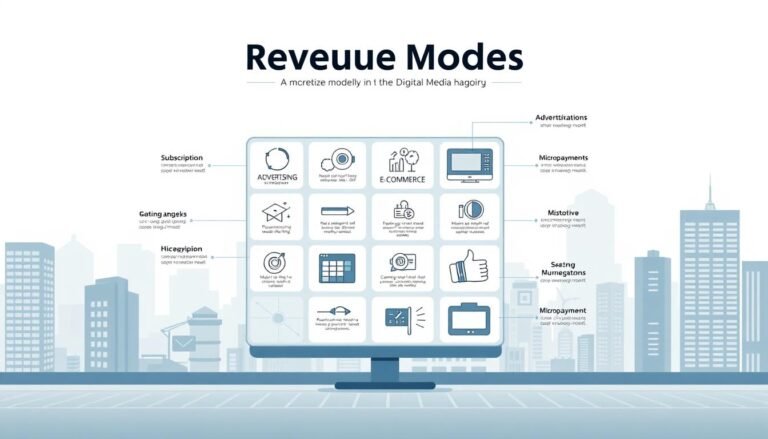Managing maritime risks
Did you know a single maritime incident can cost billions? Ships carry over 80% of the world’s trade. So, managing maritime risks is key to keeping the economy stable. It’s about preventing threats like piracy, terrorism, and environmental disasters.
It also protects crew and cargo. But how do top companies prevent thousands of incidents each year? They use tools like HiLo’s Risk Hawk.
Maritime risk management is more than just crisis response. It’s about being proactive. This includes analyzing data in real-time, training crews, and using advanced technology like the OneOcean Platform’s piracy module.
Shipping companies now prevent over 2000 incidents yearly with solutions like HiLo’s. But, why do many still use old methods?
Learn how predictive analytics, safety protocols, and digital tools change risk prevention. See how companies save millions by using frameworks that mix human skills with AI insights. This guide shows how to build strong systems that protect assets and reputations.
Key Takeaways
- Proactive maritime risk management reduces incidents and saves companies like HiLo customers over $130 million yearly.
- Data tools such as Risk Hawk and Zenith enable real-time threat detection and predictive analysis.
- Strong safety cultures with trained crews reduce human error by prioritizing communication and learning from past events.
- Platforms like OneOcean visualize global risks, helping vessels avoid high-threat zones with FleetManager alerts.
- Regulatory compliance and tech integration are key to modern maritime risk strategies.
Understanding the Maritime Risk Landscape
Today’s maritime industry risks include piracy, cyberattacks, environmental disasters, and geopolitical conflicts. These threats are found in places like the Red Sea and Southeast Asia. They require us to be proactive in managing marine risks.
Common Threats in Modern Maritime Operations
- Piracy in high-risk zones like the Bab al-Mandab Strait disrupts 90% of global trade.
- Cyberattacks target ports and vessels, as seen in the sabotage of Nord Stream pipelines.
- Environmental damage from oil spills and climate-driven storms threatens operations.
- Regional instability in East Africa and Latin America fuels illegal activities like drug trafficking.
The Evolution of Maritime Risk Factors
Technological advancements and geopolitical shifts are changing risk profiles. Automation tools like drones (UAVs/UUVs) monitor underwater assets. Data integration from AIS and radar improves surveillance.
For example, Denmark enhanced radar coverage around offshore wind farms. This boosts situational awareness. EU directives like the Critical Entities Regulation legally mandate infrastructure protection strategies.
Why Traditional Risk Management Falls Short
Legacy approaches focus on basic protocols but fail to address modern complexities. Cybersecurity gaps, geopolitical tensions, and climate change require dynamic solutions. A 2023 study highlighted vulnerabilities in offshore energy infrastructure, urging real-time data analytics.
US Coast Guard reports since 2020 stress the need for unified cybersecurity frameworks. They point out the flaws in outdated siloed systems.
| Risk Type | Example | Impact |
|---|---|---|
| Piracy | Bab al-Mandab Strait attacks | Supply chain delays |
| Cybersecurity | Nord Stream pipeline sabotage | Infrastructure damage |
| Geopolitical | Red Sea terrorism | Rising insurance costs |
The Critical Importance of Maritime Risk Management
Managing maritime risks is more than a legal must—it’s a smart move. Good maritime risk management keeps crew, cargo, and nature safe. It also makes businesses more profitable. The International Maritime Organization (IMO) says risk assessment helps decide if to take a risk or lessen its harm.
This forward-thinking way turns possible dangers into chances for better performance.
| Step | Purpose |
|---|---|
| Hazard Identification | Find possible dangers like equipment failure or weather events. |
| Risk Estimation | Figure out how likely and big the risks are. |
| Risk Control | Put in place measures to lessen high-risk dangers. |
| Action Implementation | Start using solutions like new training or rules. |
| Risk Monitoring | Watch how well the strategies work and change them as needed. |
Safety Management Systems (SMS) from the IMO help with rules and saving money. By using SMS, companies:
- Lower downtime by 40% or more due to accidents
- Stop financial losses without insurance by predicting risks
- Follow environmental rules better with green practices
One tanker company cut its insurance costs by 15% with real-time risk tracking. This shows that being proactive with maritime risk management is a way to grow, not just survive.
Key Categories of Maritime Industry Risks
Modern maritime operations face many challenges. These range from everyday problems to big global changes. Knowing these areas is key to keeping maritime safe and in line with rules.
Operational Risks in Maritime Activities
Operational failures often come from human mistakes, broken equipment, or bad cargo handling. For example:
- Equipment malfunctions causing delays or accidents
- Cargo mismanagement leading to financial loss
- Trespassing incidents disrupting vessel security
- Human trafficking and smuggling activities
Environmental and Climate-Related Threats
Environmental risks like oil spills and illegal dumping harm ecosystems and legal standing. Climate change brings:
- Rising sea levels affecting port infrastructure
- Extreme weather disrupting routes
- Emission regulations increasing compliance costs
Geopolitical and Regional Challenges
Regional instability creates piracy hotspots, sanctions, and territorial disputes. Risks include:
- Acts of terrorism targeting vessels or ports
- Sanctions blockingading trade routes
- Piracy groups demanding ransoms for hijacked ships
Cybersecurity Vulnerabilities
Modern ships rely on digital systems vulnerable to hacking. Threats like:
- Ransomware attacks locking navigation systems
- Data breaches exposing sensitive cargo details
- Automated systems hijacked to control vessels
Dealing with these maritime industry risks needs proactive steps. From training crews to using cybersecurity tools, each step helps keep things safe. Finding the right balance ensures smoother operations in a changing world.
Developing a Robust Maritime Risk Assessment Framework
Creating a maritime risk assessment framework begins with clear goals. It must fit with the real needs of managing ships or offshore projects. Key steps include setting risk criteria, assigning roles, and setting measurable goals.
The maritime risk analysis phase is crucial. It follows a 5-step process: identifying risks, evaluating them, prioritizing, controlling, and reviewing. Risk matrices help rank dangers by how likely and how severe they are. For example, a severe storm threat on a cargo route might be critical, needing quick action.
Frameworks work best when they are flexible. Consider these flexible parts:
- Risk categories: Tailor for different types of vessels (like tankers or cruise ships)
- Thresholds: Change risk tolerance levels based on cargo value or route complexity
- Documentation: Keep records digital for easy updates and audits
Using data smartly makes strategies more effective. McKinsey says companies can cut risk costs by 20% with predictive analytics. PwC reports 55% of firms use AI for real-time threat detection, like tracking extreme weather. Deloitte advises aligning risk plans with business goals to find operational efficiencies.
| Method | Description | Use Case |
|---|---|---|
| Qualitative Analysis | Focuses on descriptive criteria | Assessing piracy risks in high-risk zones |
| Quantitative Analysis | Incorporates numerical data | Calculating collision probabilities using vessel traffic data |
| Scenario Modeling | Simulates “what-if” situations | Planning for cyberattacks on navigation systems |
Keeping frameworks up-to-date is key. Regulations like IMO guidelines change, so frameworks must too. Training crews on new protocols ensures they know their safety roles. By combining technology and human skills, companies can cut incidents by 30% and build a safety-first culture.
Maritime Risk Analysis: Methods and Best Practices
Effective maritime risk analysis mixes data with common sense. It’s about picking the right method to handle risks. Let’s look at how to use these strategies in your work.
Quantitative vs. Qualitative Risk Analysis Approaches
First, choose the right way to analyze risks. Quantitative analysis uses numbers to rank risks. Qualitative methods look at things like crew experience. Many use both for a complete view.
Historical Data for Predictive Insights
Learning from past mistakes helps avoid future problems. Look at incident reports to find common issues. The Port Marine Safety Code (PMSC) suggests a four-step approach. This follows the ALARP principle to reduce risks as much as possible.
Risk Mapping Techniques
- Heat maps show high-risk areas with colors.
- Bow-tie diagrams show how accidents happen and what they cause.
- Geospatial tools combine weather and shipping lanes to find danger spots.
These tools help teams see risks, whether planning routes or training new staff.
Training, like that from the International Maritime Organization (IMO), teaches these methods. By using these techniques, companies can improve safety and follow maritime risk assessment rules.
Implementing Effective Maritime Safety Management Systems
Creating a solid maritime safety management system involves four key areas: safety at sea, crime prevention, border protection, and environmental care. These areas are the foundation for protecting crew, ships, and the environment. By making these principles part of daily work, companies can better manage risk mitigation in maritime tasks.
| Pillar | Description |
|---|---|
| Safety at Sea | Implementing procedures aligned with IMO standards to prevent accidents and ensure compliance. |
| Criminal Prevention | Collaborative efforts to counter piracy, smuggling, and cyber threats through real-time monitoring and drills. |
| Border Security | Strategies to deter illegal activities in territorial waters using advanced surveillance tech and crew vigilance. |
| Environmental Protection | Adopting green technologies to minimize oil spills, emissions, and ecological damage. |
Creating a Culture of Safety Awareness
Leaders must show they value safety above all. Regular drills and open communication keep the crew involved. Small actions, like praising safe behavior, help everyone feel responsible.
Training Requirements for Maritime Risk Mitigation
- Basic safety training covering emergency protocols and equipment use.
- Specialized courses on cybersecurity and environmental regulations.
- Simulation exercises to prepare for crises like collisions or cyberattacks.
- Annual refresher courses to update skills and knowledge gaps.
Documentation and Reporting Procedures
Keeping detailed records of inspections, maintenance, and incidents is crucial. Digital platforms make reporting easier, and AI tools spot trends early. Being open with records builds trust with regulators and others.
Managing Maritime Risks Through Technology
Technology is changing how the maritime industry handles managing maritime risks. It brings in AI-driven analytics and real-time tracking systems. These digital tools make voyages safer and more efficient.
Solutions like LR OneOcean’s Regulatory Compliance platform use satellite data. They alert crews to dangers like piracy or extreme weather. AI platforms like Concirrus analyze vessel behavior to spot threats early.
Modern systems use IoT sensors and big data. They monitor cargo conditions, equipment performance, and crew health. For example, AI tools predict route risks by analyzing satellite imagery and weather patterns.
Blockchain technology secures data exchanges. Cybersecurity frameworks like NIST and ISO standards protect against threats like ransomware and GPS spoofing.
Key strategies include:
- Real-time tracking with automated alerts for AIS system tampering or route deviations
- Risk scoring models using machine learning to assess vessel vulnerability
- Cybersecurity training programs aligned with IMO guidelines and EU’s NIS 2 Directive
- Collaborative platforms like the EU’s CISE for sharing threat intelligence
While technology boosts maritime risk management, human skills are still crucial. Tools like Singapore’s MariOT cybersecurity testbed are used with crew training. This ensures systems operate safely. Smart technology helps operators anticipate and protect against challenges.
Regulatory Compliance as a Risk Mitigation Strategy
Following maritime rules turns legal needs into strong ways to risk mitigation in maritime work. By using global standards every day, companies cut down on accidents, legal troubles, and harm to the environment. This also makes their operations stronger.

International Maritime Organization (IMO) Requirements
Key IMO rules are the core of maritime risk management:
- SOLAS: Makes sure vessels are safe with the right gear and emergency plans.
- MARPOL: Helps lessen environmental damage with pollution control steps.
- ISM/ISPS Codes: Boosts safety and security by improving management systems.
US Coast Guard Regulations and Compliance
U.S. operators need to focus on:
- Subchapter M: Sets safety rules for towing vessels to avoid accidents.
- Jones Act: Makes sure domestic vessels meet citizenship and crew rules, lowering legal and operational risks.
- VRPs/FRPs: Emergency plans help lessen environmental and financial damage in crises.
Industry-Specific Standards and Certifications
Certifications like TMSA and OCIMF enhance safety and consistency. BIMCO contracts clear up legal duties, and class society checks ensure vessels are fit. These steps make compliance a shield against problems.
Regular checks, updated records, and digital tools help stay on top of changing rules. Being proactive in compliance is not just for survival. It’s a smart move for lasting strength.
The Role of Maritime Insurance in Risk Management
Maritime insurance acts as a financial safety net and a tool for managing marine risks. It helps companies protect their assets and improve safety by using underwriting criteria. Policies like hull and machinery coverage, protection and indemnity (P&I), and cargo insurance cover various risks, from collisions to cyber threats.
Today, insurers use advanced tools to assess maritime insurance risks. They use data from vessel tracking, port congestion, and AI analytics to predict and prevent issues. For example, Bulgaria’s maritime sector saw cargo insurance premiums change between -3.5% and +9.9% annually from 2010–2019. This shows how the market responds to risk trends.
| Metric | 2010–2019 Data |
|---|---|
| Bulgaria GDP annual growth | 1.8% |
| Sea transported goods growth | 7.6% average |
| Non-life insurance market share | 80–83% of total premiums |
Insurers offer discounts for safer practices, like using real-time tracking or crew training. This helps businesses reduce risks and costs. For example, AI can now verify data in seconds, speeding up claims processing. This partnership between insurers and clients makes risk management a team effort, strengthening the maritime industry.
Crisis Management and Emergency Response Planning
Effective crisis management is key to managing maritime risks. When emergencies happen, a plan helps crews act fast. This protects lives, assets, and the environment. Good maritime risk management means having plans for threats like fires, collisions, and piracy.
Developing Effective Response Protocols
Begin by planning for scenarios like fires or oil spills. Make sure everyone knows their role. For example, who does evacuation, containment, or communication?
Regular drills are crucial. Use real-life scenarios, like mock collisions or security breaches. Also, include coast guards in drills to ensure everyone works together smoothly.
- Conduct quarterly drills with role-specific tasks
- Update plans annually using feedback from drills
- Integrate NOAA’s debris response guides for environmental incidents
Communication Strategies During Emergencies
Clear communication is vital during crises. Use VHF channels, satellite phones, and digital platforms to stay in touch. Train crews to share important information with both onboard teams and authorities.
Choose one person to speak for the crew. This helps avoid confusion.
Post-Incident Analysis and Learning
After an incident, figure out what went wrong. Use root cause analysis to find out. Document your findings in a lessons-learned report.
For example, NOAA used post-hurricane debris mapping to improve their plans. Update your protocols based on these insights. This makes your operations safer.
By focusing on preparedness, crews can turn crises into chances to improve their maritime risk management strategies. Training, teamwork, and flexible plans lead to safer operations in uncertain times.
Environmental Risk Mitigation in Maritime Operations
Environmental safety is key in today’s maritime world. With 90% of global trade by sea, it’s vital to protect the environment and keep operations running smoothly. This means finding ways to prevent harm to nature while following rules and keeping businesses going. We’ll look at how to manage marine risks through pollution control, adapting to climate change, and using sustainable practices.
Pollution Prevention Strategies
To cut down on pollution, we must follow global rules like the MARPOL Convention. Here are some important steps:
- Oil spill prevention via containment systems and emergency response drills.
- Ballast water management under the BWM Convention to stop invasive species spread.
- Low-sulfur fuel adoption and advanced scrubbers to cut air emissions.
- Secure cargo lashing and stability analysis to prevent accidental spills during transport.
Managing Climate Change Impacts
Sea levels are rising and storms are getting stronger. To adapt, maritime operators need to:
- Update routes to avoid newly hazardous zones and melting Arctic passages.
- Invest in resilient infrastructure to withstand extreme weather events.
- Track real-time climate data to adjust voyage plans dynamically.
Sustainable Practices That Reduce Risk Exposure
Being eco-friendly can give businesses an edge. Here are some examples:
- Adopting digital tools like AIS tracking and weather forecasting systems.
- Using renewable energy sources to reduce emissions and regulatory penalties.
- Training crews in cybersecurity and environmental protocols to maintain compliance.
By using these strategies, companies can make being green a competitive advantage. This approach also meets the goals of the International Maritime Organization’s 21 environmental treaties. It helps businesses succeed in a world that’s always changing.
Supply Chain Risk Management for Maritime Businesses
Managing supply chain disruptions is key for maritime businesses in today’s global trade. Geopolitical changes and extreme weather are just a few maritime industry risks that need careful maritime risk management. For example, Shanghai’s annual downtime costs billions, and rerouting around Africa adds $1 million per trip.
Recent piracy trends show 86% of 2024 incidents involved crew hostage situations. This disrupts cargo flows.
Key risks include relying too much on one port, outdated IT/OT systems, and human errors like phishing scams. The 2024 low-water crisis at the Panama Canal cut trade volumes by 72%. This shows the importance of diversifying routes.
Companies can use:
- Real-time tracking tools to monitor cargo and adjust routes
- Buffer inventories to absorb delays or shortages
- Multi-port agreements to avoid congestion bottlenecks
- Data analytics to predict weather or geopolitical shifts
- Force majeure clauses in contracts to address unforeseen events
Working with reliable 3PL providers and securing alternative transport modes like rail can help during crises. The IMO’s MSC.428(98) resolution encourages adding cyber safeguards to safety plans. The EU’s NIS directive also boosts digital resilience.
By focusing on visibility and agility, businesses can turn risk mitigation into a competitive advantage. This ensures smoother operations and keeps customers trusting them.
Human Factors in Maritime Risk Mitigation
Human factors are key in risk mitigation in maritime operations. Crew training needs to be more than just basic. It should include drills and simulations for emergencies. Certifications like STCW standards make sure skills match real-world needs.
- 80% of marine accidents come from human mistakes (IHO, 2023)
- 84-88% of tanker accidents are due to human errors
- Seafarers working over 17 hours have judgment like 0.05% blood alcohol (Adelaide Sleep Study)
Crew Training and Certification
Good maritime safety management begins with training. It should cover:
- Simulation-based emergency responses
- Cybersecurity for digital systems
- Language skills for diverse crews
Fatigue Management Strategies
To fight fatigue, we need to tackle:
- Physical: Noise, extreme temperatures, and poor lighting
- Mental: Stress from being alone and high work demands
- Sleep solutions:
- 10-hour rest periods in every 24 hours (IMO MSC.454(99))
- Sharing workload among crew members
Building Safety Culture
Companies must focus on:
- Open near-miss reporting systems
- IAEA’s 132-question safety culture check
- Leaders leading by example in safety drills
When companies care for their crew and train them well, they cut human error risks by 30-50% (IMO 2022 report). This approach turns crews into key players in keeping operations safe.
Case Studies: Successful Maritime Risk Management Strategies
Real-world examples show how proactive maritime risk management saves lives and reduces costs. The Titanic disaster is a hard lesson. It was caused by overconfidence, ignored warnings, and weak design.
Now, vessels focus on design and communication to avoid such tragedies. They use redundancy and better protocols.
Today, Marine Data Hub is a success. It’s a platform for real-time risk sharing among shipping firms. It uses open standards for data, improving collaboration without security risks.
This system cut incident response times by 40% for members. It shows that managing maritime risks through transparency works.
Our clients saw real results: $130 million saved and over 2,000 incidents prevented in 2023. Key strategies included:
- Automated alerts for weather and piracy hotspots
- AI-driven maintenance schedules to detect equipment failures early
- Training programs focusing on crisis decision-making
Maersk, a container shipping giant, also saw success. They cut collision incidents by 35% with predictive analytics. They track vessel routes against historical accident data, flagging high-risk zones weeks in advance.
This approach aligns with best practices in maritime risk management. It balances technology and human oversight.
These stories show that effective managing maritime risks needs innovation and tradition. From historical lessons to modern tech, every strategy starts with understanding risks and acting before they happen.
Measuring the ROI of Your Maritime Risk Management Program
Showing the worth of maritime risk and safety programs needs clear numbers. Companies that invest in these systems often see real benefits. These include fewer accidents, cost cuts, and better work flow. Tools like OSHA’s Safety Pays calculator and the National Safety Council’s resources help show these gains. Let’s look at how to track and show this value well.
Track these maritime risk assessment KPIs to gauge program effectiveness:
| KPI | Description | ROI Impact |
|---|---|---|
| MTTD (Mean Time to Detect) | Time to identify threats | Lower MTTD reduces cyberattack damages |
| MTTR | Time to resolve incidents | Faster recovery minimizes downtime costs |
| Incident Frequency Rate | Number of incidents/year | Lower rates signal effective prevention |
Use this formula to calculate ROI: (Benefits – Costs) / Costs. For example, a $5,000 investment could save $88,000, showing a 120% ROI. The National Safety Council says every dollar spent on maritime safety management saves two dollars.
Refine strategies using KPI trends. Regular audits and employee feedback help spot areas for improvement. For example, cutting damaged stock rates by 15% through better cargo handling boosts profits. Use data like compliance rates and risk mitigation effectiveness to keep ROI growing.
Conclusion: Charting a Safer Course Through Proactive Maritime Risk Management
Proactive maritime risk management is now a must for businesses in today’s fast-changing industry. With tools like satellite-based AIS systems and Bayesian networks, companies can spot risks early. These technologies helped reduce the impact of the Suez Canal blockage by 70%.
New threats like GNSS jamming in the Black Sea and climate-driven delays need smart strategies. By making managing maritime risks a part of daily work, companies can stay ahead of new rules and cyber threats. This approach also helps in saving money and lives, as shown by consulting firms.
Businesses should use real-time data and work with experts to tackle issues like high insurance costs and green rules. The goal is to keep improving and updating systems as risks change. By focusing on maritime risk management, companies can turn risks into chances for growth and stay strong in an uncertain world.
Source Links
- Maritime Risk Management Explained – HiLo – https://www.hilomrm.com/maritime-risk-management-explained/
- Managing security amid maritime threats | LR OneOcean – https://www.oneocean.com/insights/managing-security-at-sea
- Navigating Maritime Security Risks: Expert Insights on National Infrastructure Threats – https://systematic.com/int/industries/defence/news-knowledge/blog/navigating-maritime-security-risks-lessons-from-defence/
- Riskology By Infortal™: Episode 37 – Boots on Deck: Managing Maritime Risk with Joshua Hutchinson from AMBREY | JD Supra – https://www.jdsupra.com/legalnews/riskology-by-infortal-episode-37-boo-04038/
- Maritime Risk Bootcamps | Experiential Learning for Business and Science – https://externship.rutgers.edu/externship-bootcamp/maritime-risk-bootcamps/
- The Importance of Risk Assessment in Marine Operations | SHIPMATE – https://sbntech.com/marine-operations-risk-assessment/
- The Crucial Role of Marine Safety Management Systems | Dockmaster Blog – https://www.dockmaster.com/blog/role-of-marine-safety-management-systems/
- Maritime Security | What is Maritime Security? – https://www.mitags.org/security-guide/
- Marine Safety: Understanding the Hazards of the Marine Industry (and How to Safely Navigate Them) – https://hylant.com/insights/blog/marine-safety-understanding-the-hazards-of-the-marine-industry-and-how-to-safely-navigate-them
- Case Study: Risk Management Framework for Maritime Logistics in Asia-Pacific – https://globalriskcommunity.com/profiles/blogs/case-study-risk-management-framework-for-maritime-logistics-in-as
- A Step-by-Step Guide – Marine Safety Consultants – https://marinesafetyconsultants.com/how-to-conduct-an-effective-risk-assessment-for-passenger-vessels-a-step-by-step-guide/
- Marine risk management: best practice – https://www.abpmer.co.uk/blog/marine-risk-management-best-practice/
- Risk assessment in marine transportation | Britannia P&I – https://britanniapandi.com/2024/08/understanding-effective-risk-assessment/
- Ensuring Compliance with ISM Code – https://www.lmitac.com/articles/ism-code-maritime-safety-management
- Marine Safety Management: Safety and Compliance Excellence – Wilhelmsen – https://www.wilhelmsen.com/media-news-and-events/industry-perspectives/2024/marine-safety-management-systems/
- Maritime Cybersecurity | Protecting Vessels and Ports – https://www.maritime-cybersecurity.com/
- The resumption of Houthi attacks: Implications for maritime security and how technology can help navigate new risks – Concirrus – https://concirrus.ai/houthi-attacks-implications-for-maritime-security-and-how-technology-can-help/
- Cybersecurity in Maritime: Navigating the Digital Seas Safely – https://www.marinelink.com/articles/maritime/cybersecurity-in-maritime-navigating-the-digital-seas-safely-101609
- Regulatory Compliance in the Maritime World – Marine Safety Consultants – https://marinesafetyconsultants.com/regulatory-compliance-in-the-maritime-world/
- Top 22 Proven Strategies to Minimize Risk in Maritime Shipping – Ship Universe – https://www.shipuniverse.com/top-22-proven-strategies-to-minimize-risk-in-maritime-shipping/
- Navigating the Changing Seas: Adapting to Regulatory Changes in the Maritime Industry – https://hylant.com/insights/blog/navigating-the-changing-seas-adapting-to-regulatory-changes-in-the-maritime-industry
- Transforming Maritime Insurance Through Advanced Risk Assessment – https://www.sdcexec.com/safety-security/risk-compliance/article/22883285/breeze-transforming-maritime-insurance-through-advanced-risk-assessment
- Risk management in maritime transport of goods through insurance – https://www.matec-conferences.org/articles/matecconf/pdf/2021/08/matecconf_istsml2021_01003.pdf
- Enhancing Crisis Management for Maritime Crews | Seaman Solutions – https://seaman-solutions.com/enhancing-crisis-management-maritime-crews
- PDF – https://www.cencenelec.eu/media/CEN-CENELEC/News/Workshops/2023/2023-05-12 – ERP/cwa_erp_finaldraft.pdf
- Emergency Response | Marine Debris Program – https://marinedebris.noaa.gov/our-work/emergency-response
- Marine Environment – https://www.imo.org/en/OurWork/Environment/Pages/Default.aspx
- Risk Assessment Onboard Ships: Ensuring Safe Maritime Operations – https://maritimeducation.com/risk-assessment-onboard-ships-ensuring-safe-maritime-operations/
- Mastering Online Maritime Risk Management – Virtual Maritime Academy – https://www.virtualmaritime.academy/online-maritime-risk-management/
- Maritime sector faces cyber supply chain risk – https://www.strategic-risk-global.com/cyber-/-technology-risks/maritime-sector-faces-cyber-supply-chain-risk/1427183.article
- Top 30 Risk Mitigation Strategies – Ship Universe – https://www.shipuniverse.com/maritime-disruptions-top-30-risk-mitigation-strategies/
- The State of Maritime Supply-Chain Threats – https://www.csis.org/analysis/state-maritime-supply-chain-threats
- The Role Human Factors Plays in Maritime Safety – https://maritimesafetyinnovationlab.org/2023/05/19/the-role-human-factors-plays-in-maritime-safety/
- A study of the human factors in maritime safety – https://commons.wmu.se/cgi/viewcontent.cgi?article=1272&context=msem_dissertations
- Human Factors and Safety Culture in Maritime Safety (revised) – https://www.transnav.eu/files/Human_Factors_and_Safety_Culture_in_Maritime_Safety_(revised),443.pdf
- How Poor Risk Management Sunk the Unsinkable, and Lessons Learned in Identifying Blind Spots in the Modern Threatscape – https://mitratech.com/resource-hub/blog/the-titanic-a-case-study-in-flawed-risk-management/
- The Future of Maritime Risk Management: Data Sharing Platforms – https://mismarine.com/the-future-of-maritime-risk-management-data-sharing-platforms/
- What is the ROI of a risk management framework? – https://www.linkedin.com/advice/0/what-roi-risk-management-framework-skills-project-management-sobue
- How is ROI measured | Ideagen EHS – https://www.ideagen.com/thought-leadership/blog/how-is-roi-measured-in-safety-tools-and-strategies-to-calculate-impact
- Top Risk Management KPIs: Examples, Tools & Best Practices – https://clickup.com/blog/risk-management-kpis/
- Charting the Course: Maritime Consultation Redefines Marine Insurance – https://www.linkedin.com/pulse/charting-course-maritime-consultation-redefines-vwpvc
- Maritime Security and Risk Assessments – https://elib.dlr.de/206981/1/jmse-12-00988-1.pdf








